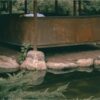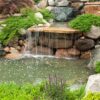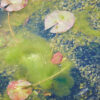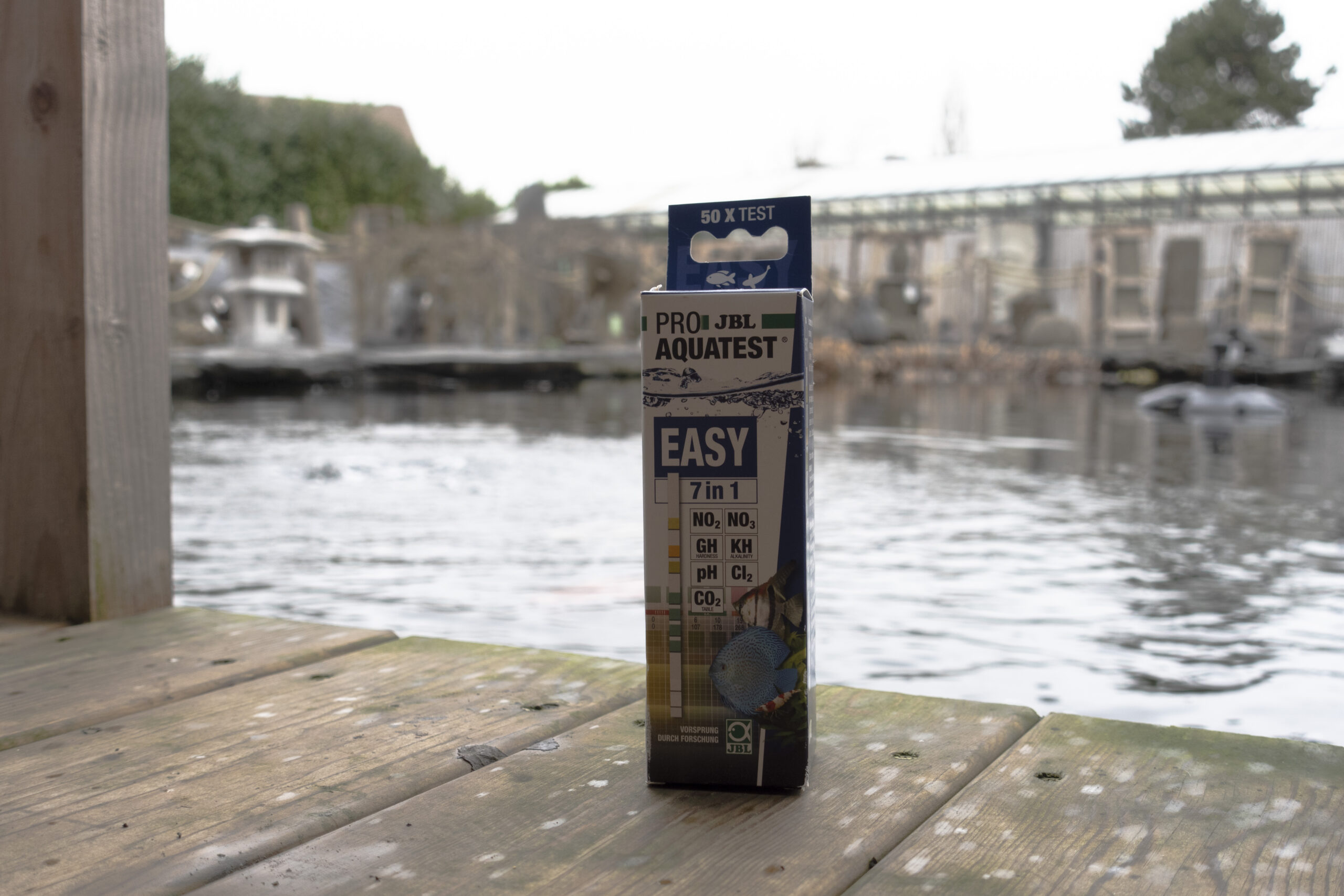You are asking yourself, How To Eliminate Green Pond Water? How to avoid green water in a pond? The first thing you need to know is that a natural pond in general is always green in season if it is exposed to the sun.
What to do about green water in a pond? How to fight green water in a fish pond? How to control algae and green water in your pond? What should be done in case of green pond water
A pond is a great place to relax. It’s supposed to be a place where you can admire aquatic plants and fish. There is nothing more unpleasant than to see your pond water all green. What are the most effective solutions for green pond water?
What to do about green water in a pond? There are exceptions for lakes or ponds with a large supply from a spring or a pond in the shade. If you have a lot of aquatic plants, you can also slow down the green water because the aquatic plants will compete with the algae. This green water is produced by an excess of phosphates and nitrates in the water. By adding a lot of plants, you will compete with the single-celled algae that give your pond water a “greenish” effect.
Cloudy or green water is not necessarily bad for aquatic life. Just look at the color of the water in a natural pond, which is rarely clear. When the biological cycle of the pond becomes unbalanced, organic matter settles to the bottom of the pond, forming a mat of silt. Green pond water is caused by tiny floating algae, which grow explosively. Additional effects are low CH value, high pH value, and stagnation in the growth of oxygen-producing plants. Green pond water frequently occurs in newly built ponds containing water rich in food.
The latter feeds the proliferation of micro-algae giving a green or brown color to the pond water. The phenomenon is amplified in summer, in sunny weather, because the water is depleted in oxygen, making the work of aerobic bacteria responsible for “digesting” organic matter less effective. What to do about green water in a pond?
Hence the question, what causes the green water in your pond
First of all, it is important to know that if the water turns green, it means that the growth of single-celled algae has gone out of control. The more single-celled algae you have in your pond, the “greener” your pond will be. Green water often means an imbalance of biodiversity in your pond.
- Too many nitrates and phosphates
- Not enough aquatic plants in the pond
- Too much organic matter on the bottom (leaves, duck droppings, etc.)
What to do about green water in a pond? How does the water turn green? You don’t understand? We will explain it all to you in this guide.
The phenomenon of green water is due to the proliferation of microscopic algae (floating algae), which float freely in the water. When conditions are favorable, these algae grow massively. High levels of phosphates and nitrates promote the growth of microscopic green algae.
It is always advisable to start with a water analysis of your pond. Once you have checked the hardness and nitrite levels, the “basic” problems will have been solved.
Single-celled algae
First, it must be said that unicellular algae are an organism that develops in aquatic environments. They develop like plants, by photosynthesis. It must be said that unicellular algae play a very important role in the ecosystem. It is the base of the food chain in the aquatic environment
In other words, unicellular algae serve as food for fish. The life of aquatic fauna and unicellular algae is interdependent. As we have just said, unicellular algae feed the fish, while the waste products of the latter promote the development of unicellular algae.
Now that we know how the food cycle of the aquatic inhabitant’s works, let’s see, when the unicellular algae start to become a problem
Green water, what to do about green water in a pond?
When your water starts to become cloudy or green, you should know that the number of single-celled algae in your pond is already abnormally high. However, there are several ways to lighten your pond water.
Why is green water a problem for your pond?
Indeed, too much algae kills the whole ecosystem inside the pond. First, because they will absorb all the light for their photosynthesis. They will also unbalance the oxygen and carbon dioxide levels in the water. If there are too many of them, these single-celled algae will suffocate the entire pond and cause the death of your fish.
When these algae die, they will once again become nutrients for the living ones and promote their multiplication. Your pond will be a nest of harmful gases such as methane and carbon dioxide. Therefore, your fish and plants will not survive.
To help you understand better, let’s ask the right question.
What promotes the uncontrolled multiplication of single-celled algae?
First of all, too many fish in a small area promotes the appearance of green water. Too many fish in a small pond means that there are too many nutrients for the algae. This overpopulation should be avoided. The fish will produce a lot of waste. In turn, the algae will multiply more and feed the fish, which will produce even more nutrients for the algae. This will become a vicious circle.
Second place goes to the overexposure of the pond to the sun
Water, aquatic plants, and fish need natural light to living in perfect balance. However, if your pond is permanently exposed to the sun, the algae will get the necessary light for their photosynthesis. In other words, they are in the ideal condition to multiply
In third place, outdoor debris such as dead leaves and stems
This debris will also serve as food for the algae. They will decompose and become good nutrients.
Then there is also the issue of overfeeding the fish. If you feed your fish more than they need, the rest will turn into algae nutrients. As a result, the single-celled algae will be well served and will multiply more. We recommend that you vacuum up the excess organic matter with a specialvacuum cleaner.
Finally, we can also consider the lack or absence of aquatic plants as one of the factors of algae multiplication. This is because if your pond has enough oxygenating and purifying plants, they will regulate the entire ecosystem. The aquatic plants will absorb some of the oxygen and gases in the water, thus regulating the photosynthesis of the algae. Under these conditions, the development of algae will be moderated.
Now let’s get to the main question
How to avoid green water?
What to do about green water in a pond? How can you avoid it? First of all, install your pond to the east, northeast or southeast of your house. This way, in the morning, the pond will benefit from the softness of the natural morning light. In the afternoon, the shade of your house will protect it from sunburn.
Second, match the number of fish to the volume of the tank.
- For the koi, it is necessary to foresee 1m3 only for 1 fish
- For carp and sturgeon, it takes about 14 to 16m3 for 1 fish
These large fish need space to move and to live in balance and hunt. For smaller fishes such as melanote and Mongolian tench, you need to provide 1m3 for 3 or 4 fishes.
Finally, goldfish, they can live several in a small space. 1m3 can contain 7 to 8 goldfish
It should be noted that when there are too many fish in your pond, it means that the water is saturated with gas and, more importantly, the nitrate level is too high. In other words, your pond becomes the ideal place for uicellular algae
Next, to protect your water from the invasion of single-celled algae, we recommend planting enough aquatic plants. Don’t hesitate to ask your pond professionals for the appropriate quantity for the size of your pond. Be aware that too many aquatic plants will also promote the appearance of green water.
Choose the right variety between oxygenating plants, purifying plants and decorative plants:
- Caltha
- Aquatic hornbill
- Water lilies
- Typha
- Pontederia
- Iris
- Stratiotes
- Pistia (in season)
If you don’t have any free space in the eastern part of your house, don’t panic, there are other solutions to avoid overexposure to the sun.
First, you can plant water lilies or lotus. Their beautiful large leaves act as a parasol par excellence
Secondly, there are shade sails, which are easy to install, they don’t cost too much. There are also umbrellas, which are very easy to install and can also be decorative.
If you have the budget, you can even install a nice pergola to provide partial and maximum protection
Then, in order to optimize the protection, plan the installation of filters and pumps appropriate to the number of fish and the volume of the water body. Indeed, filters and pumps are not chosen at random.
If you do not have the expertise to make this choice, we suggest you ask your dealer. Make sure your pond is equipped with all the necessary filtration systems: filter, pump, UV system and oxygenation system.
Be aware that single-celled algae will not survive UV lamps if they are appropriate for the tank and the number of fish
The goal is not to eliminate them to the last one, the goal is to regulate and control their multiplication so that they exist for the good of the fish
Finally, feed your fish according to their needs. Do not give them too much. We mainly advise you to use fish feeders, which you will set up in advance. The device will only release well quantified food to your fish
You ask yourself the question “what if my water is already green, Tanches of Mongolia what can I do?”
The answer is simple, try to restore balance in your pelvis by following the tips we gave you above
Daphnia (Daphnia Pulex) feed on these floating algae and can therefore be very useful. It would be enough to release clouds of daphnia to filter the water and obtain clear water … Unfortunately, these small crustaceans are often eaten by fish before they have had time to clarify the water of your garden pond …
In a garden pond you can use a UV lamp.
This type of UV system has the effect of burning single-celled algae suspended in the water. It helps to fight against green water in a pond. Discover our guide to choosing the right UV lamp for your pond. This lamp emits UV-C rays that have a strong impact on the algae that give the water a green effect. However, this lamp has no impact on the pH of the water. Please note that these lamps do not act against long filamentous algae.
In short, everything is said? 🙂
That is, …. What to do about green water in a pond?
- Plant more pond plants that are not recommended for their CO2 supply in the water. So plant floating plants, water lilies and marsh plants. Check out our list of phytorepellent plants.
- Make sure that the total hardness (GH value) of the water is at least 12° DH (improves water quality) with GH.
First of all, perform a water analysis. To do this, you can approach specialized stores or order a test case to perform a water analysis yourself.
You can also do it yourself if you have the necessary kit. The water test allows you to find the imbalance in the water. Then, make sure you are using a proper filtration system. Then, reduce the number of fish if you have too many. Install a shaded area
Above all, decorate your pond with aquatic plants. You can also eliminate algae by using ALGADREX COLOMBO products. But be careful when using single-cell algae products. If your water parameter is not good, it is advisable to isolate the fish during the treatment.
Finally, let’s talk about the use of dyes. This is indeed one of the techniques used by some experts to stop the multiplication of unicellular algae. Using natural dyes is not harmful to your fish or plants. The color will protect the pond from the sun.










